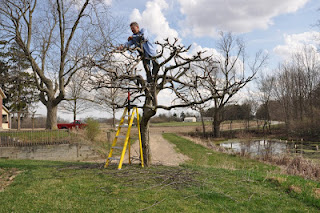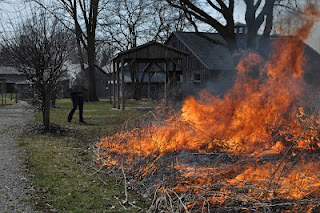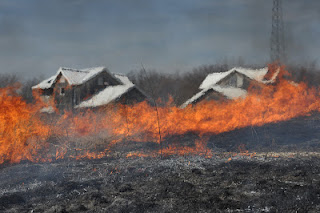Fruit Trees and Fire

After a fairly mild and somewhat disappointing winter, March has been unseasonably warm! With temperatures more than 30 degrees over the average for this time of year, we have had quite a bit to do to get ready for the next growing season. The wet winter and the hot sun so far this month have encouraged the trees to begin putting out buds in mid-March. For that reason, one of our first priorities became pruning our fruit trees and grapes. While it may seem counter-intuitive to clip off possible fruit-bearing branches, it is actually essential to increase the production and life of the tree. New shoots usually grow straight up and, if let unattended, can break under the weight of the fruit. Through pruning, one can develop a strong framework that will be able to support loads of fruit. Another important reason for pruning is to allow light to reach all parts of the tree. A tree that has a very thick canopy of leaves may actually produce less fruit due to the limited sunlight that reaches the lower branches.

Another important springtime activity at Merry Lea is the proscribed burning of parts of our restored tall grass prairie. Burning is an important and natural method of managing prairies. Grassland fires occur even without human interaction and have many benefits. The spring burning removes much of the old biomass from the prairie, which allows for the new growth. Also, the fire helps to knock back invasive species, allowing the native prairie plants to get a head start. Plants native to tall grass prairies often have roots that extend 5 to 15 feet into the soil. Therefore, the burning of the plant above the ground has no effect on the life-sustaining root system below the soil. With the use of water-filled backpack sprayers and rubber mat swatters, we are able to control the path of the fire and protect areas that should not be burned.

Earlier this month we had the opportunity to assist in the burning of the pocket prairies in and around Rieth Village. The picture above shows Rieth Village with the flames in the foreground. The other photo shows me using a backpack sprayer full of water to protect one of our apple trees from the extreme heat of the flames.
– Posted by Amy Hartzell, 2011-2012 Agroecology Intern




